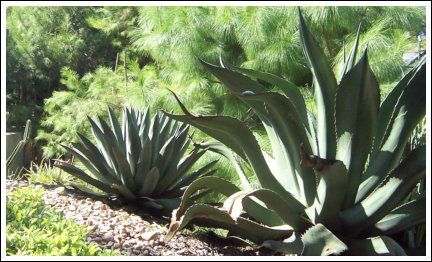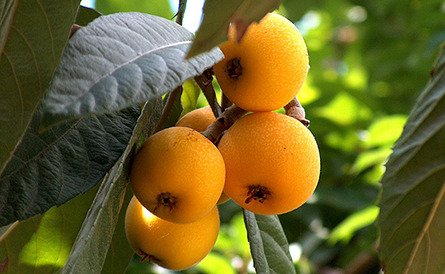by Amanda Moon
In my last fruit tree article, I covered peaches, plums, apples, pears
and pecans. These are all wonderful choices, but the options in home
fruit trees far exceed those five basics. For example, you can also
grow pomegranates, persimmons, loquats, and figs. All four are
super-easy to grow in central Texas and they require little if any care
to thrive.
______________________________________________________
Pomegranate This is probably the most common and most eye-catch-
ing of this collection. They’re as easy to grow as a crape myrtle and
just as showy, with their abundant bright orange flowers. They can
often be found growing on old homesteads around the state.
The Wonderful Pomegranate is the large, juicy “superfood” that’s
been the subject of so many healthy eating articles lately. Other orna-
mental varieties are also available, including flowering only types,
and compact growers for smaller beds needing a little color.
______________________________________________________
Oriental Persimmons Here is another super-healthy edible to grow
in your yard. There are two types of fruit to choose from: astringent
and non-astringent. With the astringent varieties, you have to let the
fruit fully soften for it to become sweet. The non-astringent varieties
are sweet from the start and can be eaten firm or soft.
Persimmons make delicious jelly or can be eaten fresh, scooping out
the flesh with a spoon. Eureka and Hachiya are good astringent
choices and Fuyu is a widely grown non-astringent variety.
______________________________________________________
Figs For those who love figs but don’t want to shell out $5 for a little
basket at the store, then a tree in your yard will provide you with all
the figs you will ever need. Probably the most restrictive problem to
overcome is having enough space for one. In Texas figs tend to be
very large bushes (I mean can get to 15’-20’ round large). In cold
winters they can die to the ground which doesn’t allow them to be
trained into tree form.
Many people look for figs with a closed-eye (on the fruit) because
this helps keep out pest and disease. Celeste is one option with a
closed eye. Some of the other more common varieties for Texas
include the Texas Everbearing (aka Brown Turkey), Alma, and Black
Mission. Many figs can be found around Austin that have been
growing unaided for decades and are still producing, although the
severe cold snaps from a few years ago killed some of them.
______________________________________________________
Loquat I must confess that until last year I had never tried a loquat
(and I suspect I am not the only one). We have grown loquats in
Texas for years and most of the time they are planted as an attractive
evergreen understory or specimen tree and not for their fruit. But the
loquat is high in vitamins, minerals and fiber. The leaves are even
used as a tea in Asian countries. You have to watch out for the seeds
like many fruits, but they have a wonderful taste similar to apricots
(some describe the flavor as more apple-like). Harvest loquats as
soon as they are soft, as they will ripen on the tree in late winter to
early spring.
The great thing about growing your own food is that you alone (well,
also maybe the birds) control what is put on the tree so that you are
absolutely sure that what you are eating is safe. Freshly picked fruit
also always tastes better and lasts longer than fruit that has been
sitting in a warehouse for a while before it makes it to the produce
section in the grocery store. Happy gardening everyone!




 Visit the website: www.itsaboutthyme.com
Visit the website: www.itsaboutthyme.com